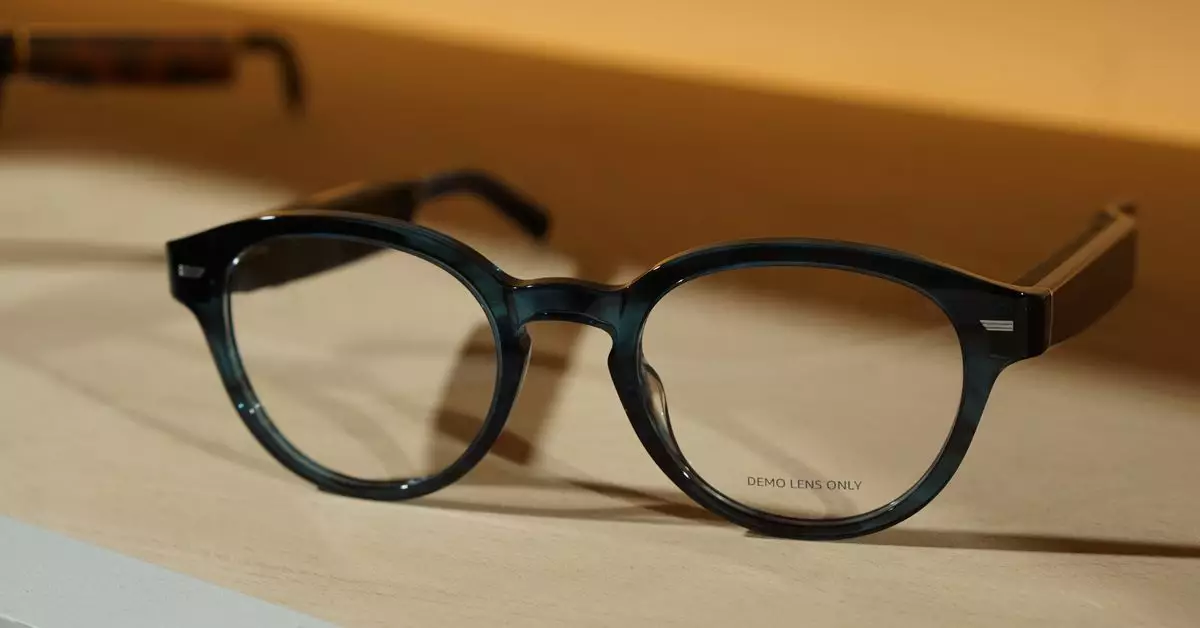In a rapidly evolving technological landscape, companies are continuously looking for ways to streamline their operations and enhance productivity. Amazon, a titan in e-commerce and logistics, is reportedly developing a cutting-edge pair of smart glasses specifically designed for its delivery drivers. According to reports from Reuters, the initiative, codenamed “Amelia,” aims to revolutionize the way delivery drivers navigate their routes by providing them with real-time, turn-by-turn directions directly in their line of sight. This innovative move could significantly alter the efficacy of last-mile delivery, ensuring that drivers can perform their tasks with greater speed and precision.
The new smart glasses draw inspiration from the existing Echo Frames platform, but with a major twist: they will feature an embedded display that allows drivers to receive visual directions. This enhancement is expected to minimize the time drivers spend looking at their devices or checking maps, potentially saving precious seconds with each delivery. Imagine a delivery driver easily seeing instructions like “turn right after the elevator” without having to divert their attention or stop to consult a GPS. The efficiency gained from such a system could lead to more deliveries being completed in a single shift, which is particularly valuable in the competitive landscape of online retail.
Another intriguing proposal associated with these glasses is the possibility of integrating camera technology. Should drivers be equipped with the ability to capture photos of packages as proof of delivery, this could streamline verification processes and enhance accountability. Hands-free usage of the smart glasses would further enable drivers to manage multiple packages without requiring cumbersome handling of devices or paperwork, thus allowing them to operate more efficiently.
However, the venture is not without its hurdles. Developing a practical pair of smart glasses poses significant engineering challenges. One of the key issues includes creating a battery that can sustain an entire eight-hour shift without being heavy or cumbersome for the wearer. Furthermore, the integration of a display into a wearable format that is comfortable and useful has historically been difficult; previous attempts by other companies have met with limited success. Balancing weight, size, and functionality will be a critical test for Amazon’s engineering teams.
Moreover, a considerable portion of Amazon’s drivers are third-party contractors, raising questions about the practicality and adoption of the technology across the diverse workforce. Simply rolling out a new tool or piece of hardware does not guarantee its acceptance; many drivers may already have their own arrangements and preferences when it comes to delivery methods. Acquiring buy-in from this varied workforce could be a lengthy and complicated process.
The challenges do not stop with technical barriers and user acceptance. An evident concern is Amazon’s broader strategy behind this initiative. Sources indicate that last-generation Echo Frames saw disappointing sales figures, with fewer than 10,000 units sold. This underperformance highlights that simply creating smart glasses may not suffice in capturing consumer interest. In contrast, competitors like Ray-Ban Meta glasses have enjoyed more favorable market reception.
This reality leads to an important consideration: is Amazon concentrating solely on its own delivery network, or does it have aspirations for broader enterprise contracts? Significant players such as Google and Microsoft have toyed with the idea of pivoting to enterprise applications for their smart glasses after challenging consumer market experiences. Should Amazon follow suit, their technology may find utility in varying business sectors beyond logistics, possibly enhancing their market presence and revenue.
Amazon’s endeavor to launch smart glasses specifically tailored for delivery drivers marks an ambitious stride toward enhancing operational efficiency in last-mile logistics. While the concept holds tremendous potential—with real-time navigation and hands-free operations at the forefront—the execution will be critical. Overcoming technical challenges and ensuring user adoption among its diverse driver base will determine the viability of this initiative. As the situation unfolds, the impact of such innovations could resonate far beyond Amazon, influencing the trajectory of smart technology in various business realms. This move represents not just a leap in logistics technology but also an exploratory step into the intricate world of wearable enterprise solutions.


Leave a Reply